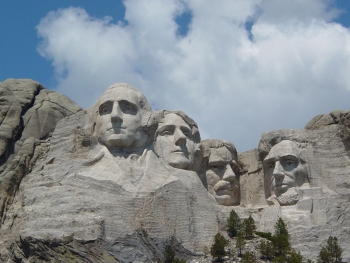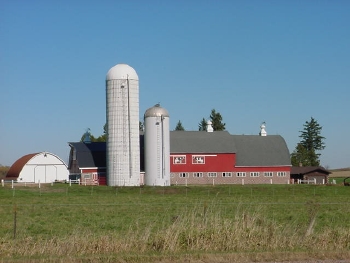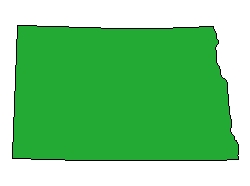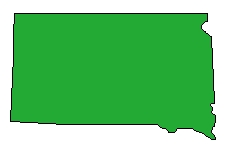|
|
The Majestic Midwest
A WebQuest on the Midwest Region of the United States
Designed by
Renée Peront
home
Introduction | Task | Process | Evaluation | Conclusion | Credits | Teacher Page
Introduction
Recently the twelve states that make up the Midwest Region of the United States have noticed a decline in tourism. As a result fewer and fewer people are visiting and these states are losing money since tourists tend to pay for hotels, souvenirs, food and attractions. They are concerned that if this continues not only will they be in financial trouble but that people will miss out on all these states have to offer. The Midwestern Tourism Association (MTA) decided that the best way to encourage people to visit is by launching a nationwide advertising campaign which will answer the following question:
Why visit the Midwest?
The MTA hopes that by sharing more information about the Midwest States to the rest of the country, more people will come and visit.
The Task
You have been hired by the Midwestern Tourism Association (MTA) to work in teams of 2 (or 3) to design a brochure about one Midwestern state. You will be in charge of researching the state and creating a brochure that will later be passed out to the public by the MTA. It is important that your brochure be attractive and informative to promote your state and inform people what makes your state so wonderful. While the general design and layout of the brochure is up to you, the MTA has asked that each brochure include the following:
Pictures (2)
Map of your state
Climate
Major cities (1-2)
National Park/Monument (1-2)
Major landforms (2-3)
Attractions (malls, museums, amusement parks, etc) (1-2)
Resources/Industries (5)
Basic Facts (capital, state bird/flower, nickname)
The MTA has given you two weeks to do your research and complete the brochure. The future of the Midwestern States depends on you. Good luck!
The Process
1.You will first be assigned to teams of two or three and presented with one of the Midwest states.
2. To begin your task, you first need to research your state.
Information you will want to look for includes:
|
Climate
|
What are the average temperatures and precipitation? What is the typical weather (rain, sun, wind, snow) for each season? |
|
Major Cities (1-2)
|
What are the major cities? Where are they located?
|
|
National Parks/ Monuments (1-2)
|
What is there to do and see at each? What is the history or importance of each? Where is each located?
|
|
Major Landforms (1-2)
|
What are the major landforms (lakes, rivers, prairies, plains, etc.)? Where are they located? What is a fact about each? |
|
Tourist Attractions (1-2)
|
What are the major tourist attractions (malls, amusement parks, museums. etc) in your state? Where is each located? What is there to do at each?
|
|
Resources/ Industries (5)
|
What does the state produce? Examples include: corn, cattle, lumber, poultry, rice, timber, dairy, etc.
|
|
Basic Facts
|
What is the state capital, bird, nickname, flower, or tree?
|
Use the below websites to collect information.
|
|
|
|
|
Illinois
|
Michigan
|
North Dakota
|
|
|
|
|
|
|
|
|
|
|
|
|
|
|
|
|
|
|
|
|
|
Indiana
|
Minnesota
|
Ohio
|
|
|
|
|
|
|
|
|
|
|
|
|
|
|
|
|
|
|
|
|
|
Iowa
|
Missouri
|
South Dakota
|
|
|
|
|
|
|
|
|
|
|
|
|
|
|
|
|
|
|
|
|
|
Kansas
|
Nebraska
|
Wisconsin
|
|
|
|
|
|
|
|
|
|
|
|
|
|
|
|
|
3. After you collect your information, it is time organize it into a short paragraph about each topic. Make sure you and your partner self-edit it and check for correct punctuation, capitalization, and spelling. Remember your brochure will be read by many different people so you want to use your best writing.
4. After you collect your information and write up your paragraphs, you and your partner need to design the layout of your brochure. Pick up a blank white sheet of 8.5 x 14 paper. Fold it into thirds and with your partner use a pencil to create a rough draft of your brochure. Some things to consider:
What will you put on the front of your brochure that will attract the reader?
How will you place your text (information)?
Where will you place you pictures and map? What will you pictures be of?
What information will you group together on each page?
How much information can you include about each topic so that you have enough room to include everything requested by the MTA?
Once you and partner have agreed on how you are going to layout your brochure, ask another team to look over it. Do they have any suggestions for you?
5. Now that you know what information you are going to include in your brochure and where you are going to place it, it is time to create your final copy. Pick up another sheet of white 8.5 x 14 paper and begin. Remember this should reflect your best work as it will be the brochure that is presented to the MTA.
Evaluation
|
|
Beginning
1
|
Developing
2
|
Accomplished
3
|
Exemplary
4
|
Score
|
|
Content
|
Brochure contains some of the required information with little supporting details and descriptions.
|
Brochure contains some of the required information with supporting details and descriptions.
|
Brochure contains all required information with little supporting details and descriptions.
|
Brochure contains all required information with supporting details and descriptions.
|
|
|
Organization
|
Writing is hard to follow. Sections are missing clear beginnings and ends. Paragraph breaks and transitions are not present.
|
Writing is easy to follow. Not all sections contain a beginning and end. Paragraph breaks and transitions are not present or are not effective.
|
Writing is easy to follow. Each section contains a beginning and end. Effective paragraph breaks and transitions have been attempted.
|
Writing is easy to follow. Each section contains a beginning and end. Effective paragraph breaks and transitions are present.
|
|
|
Conventions
|
Brochure contains 7 or more errors (punctuation, grammar, spelling, capitalization)
|
Brochure contains 5-6 errors (punctuation, grammar, spelling, capitalization)
|
Brochure contains 3-4 errors (punctuation, grammar, spelling, capitalization)
|
Brochure contains 2 or less errors (punctuation, grammar, spelling, capitalization)
|
|
|
Visual Appeal/ Layout
|
Brochure is sloppy and does not demonstrate student's best work. Pictures not present.
|
Some parts of brochure are sloppy and layout of pictures and information is not visually effective.
|
Brochure is attractive and neat however layout of pictures and information is not visually effective.
|
Brochure is attractive and neat. Pictures and information are presented clearly and effectively.
|
|
|
Cooperation/ Participation
|
Student is disruptive to the group and does not contribute to the final brochure.
|
Student is present in the group but contributes very little to the final brochure.
|
Student works cooperatively with other group members and contributes minimally to the final brochure.
|
Student works cooperatively with other group members and contributes to the final brochure.
|
|
Conclusion
Congratulations on completing your brochure. Because of your hard work, the Midwest Tourism Association is certain that more people will visit the beautiful Midwest region of the United States. Thank you!
Credits & References
Last updated on December 14, 2007. Based on a template from The WebQuest Page
|















